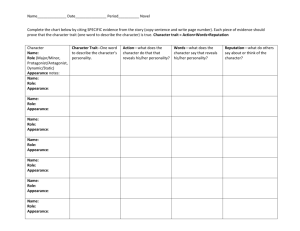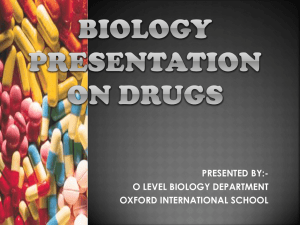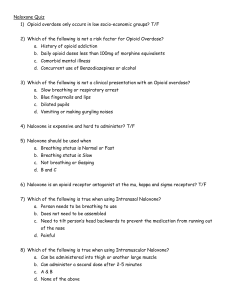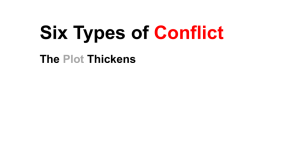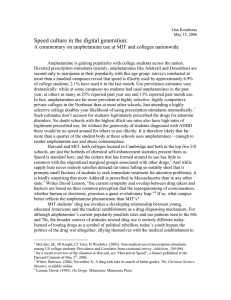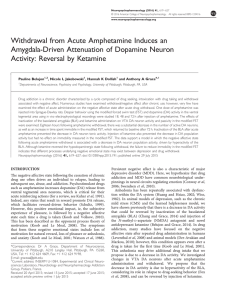Harvard-MIT Division of Health Sciences and Technology HST.151: Principles of Pharmocology
advertisement
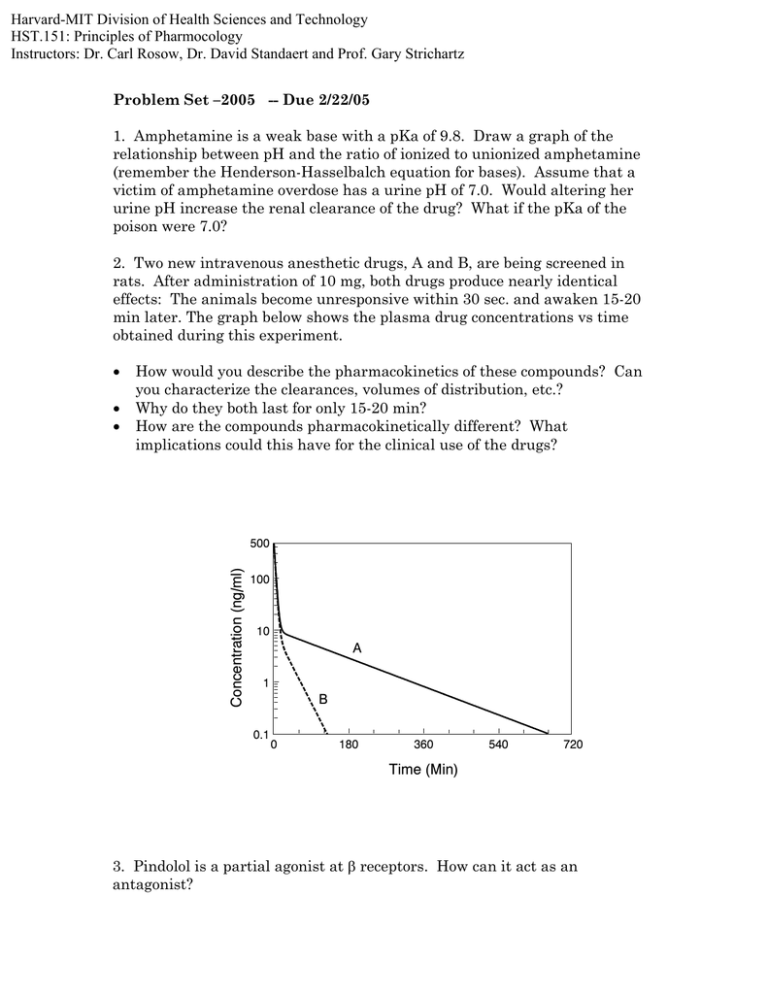
Harvard-MIT Division of Health Sciences and Technology HST.151: Principles of Pharmocology Instructors: Dr. Carl Rosow, Dr. David Standaert and Prof. Gary Strichartz Problem Set –2005 -- Due 2/22/05 1. Amphetamine is a weak base with a pKa of 9.8. Draw a graph of the relationship between pH and the ratio of ionized to unionized amphetamine (remember the Henderson-Hasselbalch equation for bases). Assume that a victim of amphetamine overdose has a urine pH of 7.0. Would altering her urine pH increase the renal clearance of the drug? What if the pKa of the poison were 7.0? 2. Two new intravenous anesthetic drugs, A and B, are being screened in rats. After administration of 10 mg, both drugs produce nearly identical effects: The animals become unresponsive within 30 sec. and awaken 15-20 min later. The graph below shows the plasma drug concentrations vs time obtained during this experiment. • • • How would you describe the pharmacokinetics of these compounds? Can you characterize the clearances, volumes of distribution, etc.? Why do they both last for only 15-20 min? How are the compounds pharmacokinetically different? What implications could this have for the clinical use of the drugs? Concentration (ng/ml) 500 100 10 A 1 B 0.1 0 180 360 540 720 Time (Min) 3. Pindolol is a partial agonist at β receptors. How can it act as an antagonist? 4. Naloxone is a competitive opioid antagonist which is used to block the effects of morphine on a smooth muscle preparation (KA = 10-8 M). Naloxone antagonizes an experimental opioid peptide in the same test system, and the KA is found to be 10-7 M. What are likely explanations for the difference? 5. A 16 mg intravenous bolus of a new antiarrhythmic is administered to volunteers, and the graph below shows the decline of plasma concentration over time. Concentration (ng/ml) 100 10 1 0 10 20 30 40 50 60 70 80 Hours Assuming single-compartment kinetics, • What is the volume of distribution? • What is the rate constant, k? • What is the clearance? • If the drug were infused at a rate of .04 mg/min, what would the steadystate concentration be? What if the infusion rate were doubled? How long would it take to get to steady-state in each case? • Assume that this agent is to be used for a life-threatening arrhythmia, and the threshold and toxic concentrations are 100 and 500 ng/ml, respectively. What would be a clinically appropriate dosage regimen for this drug? 6. You have a biopsy of normal myocardium and myocardium from a patient with congestive heart failure (CHF). How could a Scatchard plot be used to demonstrate the CHF tissue has a 50% decrease in the number of myocardial beta-1 receptors? 7. A patient has taken an over-counter-medication that decreases the clearance of her warfarin. What measurement would you use to assess the risk of bleeding? What treatments can you give her to reduce the risk of bleeding? How do they work? 8. What is the advantage of an α-1 selective antagonist (prazosin) over a nonselective antagonist (phentolamine)? 9. Does treatment with propranolol carry any special risks in • Insulin-dependent diabetics? • Patients with chronic obstructive pulmonary disease? 10. A dog is given ephedrine, i.v. to raise systemic arterial pressure. How will the blood pressure response be modified by each of the following pretreatments? Explain the mechanism in each case. • Reserpine • Pargyline • Repeated injections of ephedrine 11. A 20 year old female has lost more than 2 liters of blood in a motor vehicle accident. Her systolic blood pressure is 60 mmHg and her pulse is 140 beats/min. You are giving blood, but she needs blood pressure support. Would it be best to treat this patient with • • • Dobutamine? Phenylephrine? Propranolol? Explain your reasons in each case. 12. A transplanted heart is no longer innervated. How would you expect this to affect the cardiovascular responses to atropine, isoproterenol, or norepinephrine?

